You can shave several hours off of your cook time by smoking brisket hot and fast. This post includes my cook method, recipe and a trim video.
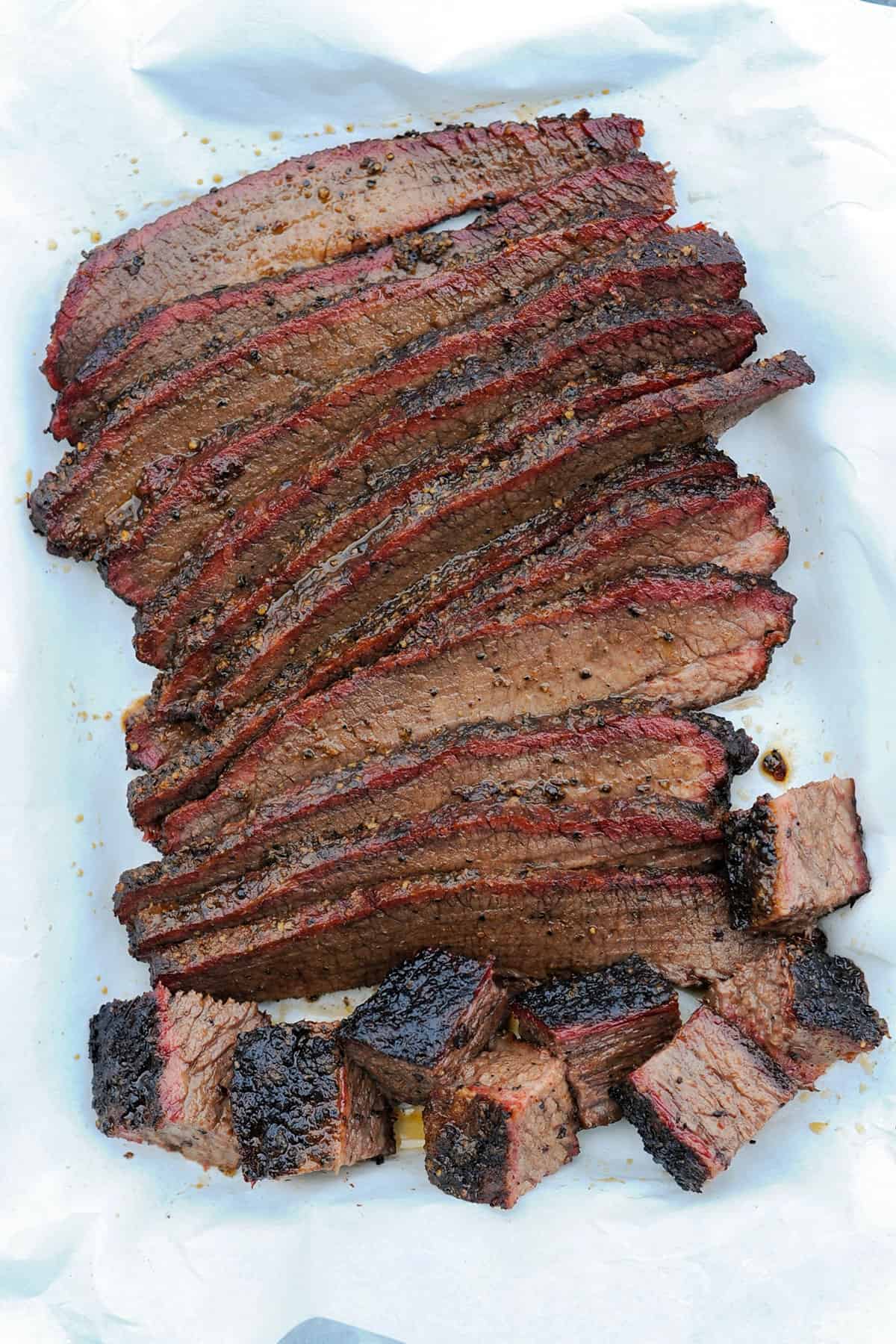
Save this BBQ Tip
Enter your email, and I’ll send this link directly to your inbox. Plus, you’ll get new BBQ recipes and tips weekly.
Table of Contents
Why cook a brisket hot and fast
I’ve been competing on the circuit for a few years now. With each competition, I learn something new.
I’ll never forget the moment when I decided to learn how to cook brisket hot and fast.
It was about 1 a.m. I was at a competition in downtown Las Vegas. I was waking up to light my brisket pit when Smitty from Loot N Booty BBQ walked by and was heading to his hotel room.
He told me at that moment, if I wanted to enjoy a little sleep during comps, I should learn how to cook brisket hot and fast.

How long does it take to smoke a hot and fast brisket?
My slow and low brisket usually takes 9-10 hours. I couldn’t imagine that a brisket could be cooked faster than that and turn out very good. Brisket is a tough muscle that needs time to break down.
It turns out, you can cook a brisket hot and fast in as little as 5 hours. When I figured this out, it was a game changer for competition cooks and even for backyard cooks when I don’t have all day to tend to the smoker.
How to cook a brisket hot and fast
With slow and low, your smoker is usually going to be set between 225-250F. With hot and fast, you’re going to crank the temp to 325F. Some of the big boys go even hotter, but I’ve found that this temp works well for me every time.
Before we get to cooking, there are a few important steps when it comes to hot and fast brisket.
Brisket grade matters
First, I highly recommend using a good quality brisket. Go with at least prime-grade beef, and if it fits into your budget, upgrade to wagyu. The more marbling that you have in your meat, the more forgiving it will be. Read my tutorial on brisket grades to learn more.
Trim aggressively
Next, you need to separate the point from the flat and do a tight trim on the brisket. This step right here is so controversial on social media. People literally lose their shit over the amount of meat I trim off. I promise you, none of the meat goes to waste. It all goes into amazing burgers.
The purpose of this trim is to focus on the end game. I’m looking for uniform, tender slices from the flat and uniform cubes of point coated with bark. Plus, by reducing the overall size of the brisket, it will naturally cook faster, and that’s the goal here.
Inject to add flavor and moisture
At competitions, I always inject my brisket – even when using wagyu, but when I’m cooking in the backyard, I usually skip the injection step and move straight to the rub. The night before you plan to smoke the brisket, liberally apply Brisket Rub and let it rest covered in the fridge overnight.
Crank the heat
When you’re ready, light your smoker to 325F. When it reaches a steady temp, add the brisket fat-side down.
For hot and fast brisket, we’re starting with the fat down, because it’s going to serve as a barrier to protect the meat from the intense heat. After about 45 minutes, the meat will start to crust and you can flip it. Overall, it gets flipped a few times in the process, which is all outlined in the recipe below.
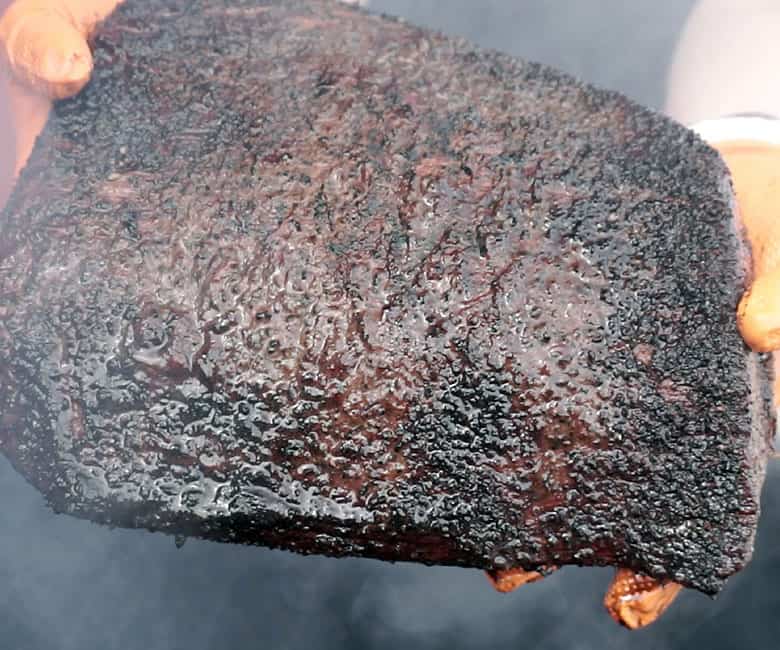
Wrap the brisket
Once the meat has a nice bark, usually after 3 hours, it’s time for the Texas Crutch. The Texas Crutch is basically a way to lock in the heat with moisture to speed up the cooking time. You can use foil or butcher paper. I however like to use aluminum pans. I learned this trick from Tim Scheer from Shake ‘n Bake and Brad Leighniger from Gettin’ Basted.
The meat goes in the pan with my mop, which is just a mixture of Brisket Rub, beef consume and water.
You cover the pans with foil, and smoke them another 2 hours or so, until that temperature probe glides in like butter.
Let it rest
If time allows, try to let the brisket rest for at least an hour before slicing it to ensure those juices settle into the meat. But if you can’t wait – and sometimes I can’t – it’ll still be great.
Want even more great grilling recipes and tips? Subscribe to my newsletter and follow me on Facebook, Instagram and TikTok for my latest grilling adventures. If you make a recipe, please leave a comment and rating below.
Save this BBQ Tip
Enter your email, and I’ll send this link directly to your inbox. Plus, you’ll get new BBQ recipes and tips weekly.
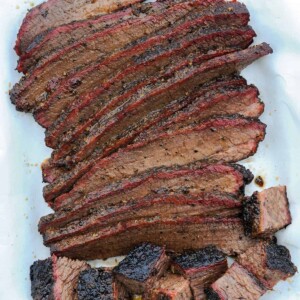
Hot and Fast Brisket
Ingredients
- 16 lb brisket
- 1 tbsp Christie Vanover's Brisket Rub
Brisket Mop
- 2 cups water
- 10 oz can beef consume
- 1/4 cup Christie Vanover's Brisket Rub
Instructions
- Separate the brisket flat from the point and remove the fat from the top. On the fattier side, trim the fat, until it is only about 1/4-inch thick. (see video above)
- Rub the flat and point with Brisket Rub. Cover and refrigerate overnight. Combine the mop ingredients.
- Heat smoker to 325F degrees.
- Add the brisket to the smoker, fat side down. Smoke for 45 minutes. Flip the point. Smoke for 45 more minutes. Flip the flat. Smoke for 1 1/2 hours.
- Place the meat in two aluminum half pans, fat side down. Pour the mop into the pans; cover with foil.
- Return to the smoker for about 2 hours or until the temperature probe glides in like butter The internal temp will be about 210F.
- Let rest 1 hour before slicing.
Notes
Nutrition
Nutrition information is automatically calculated, so should only be used as an approximation.
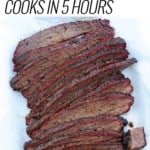
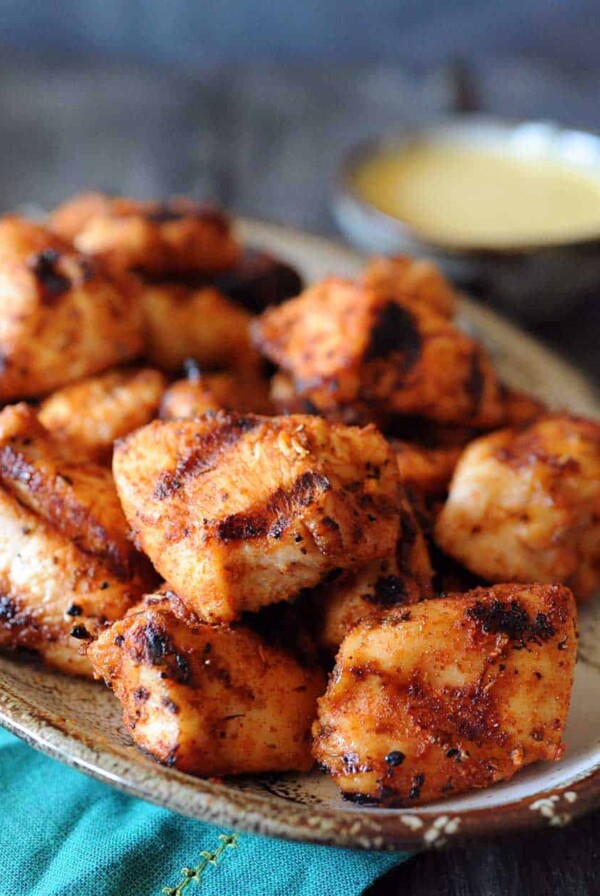
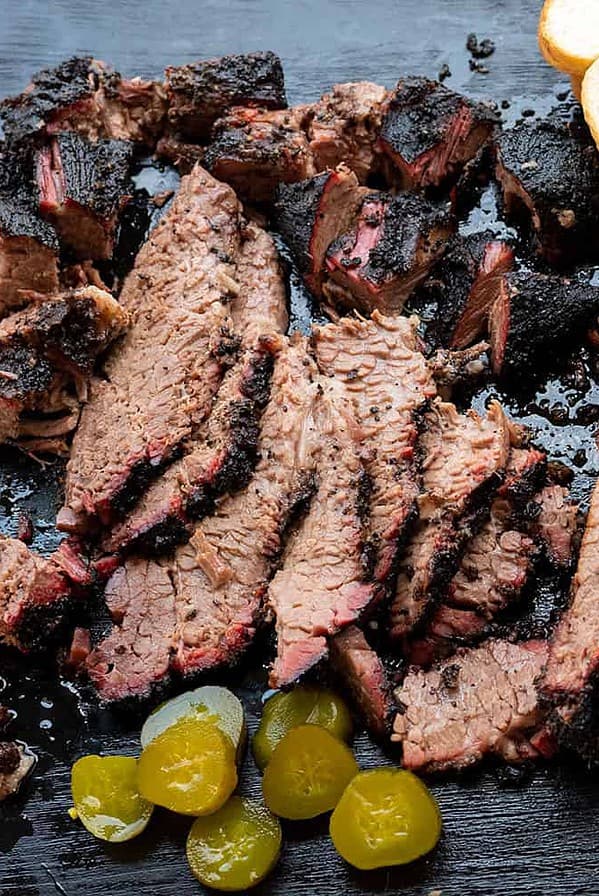
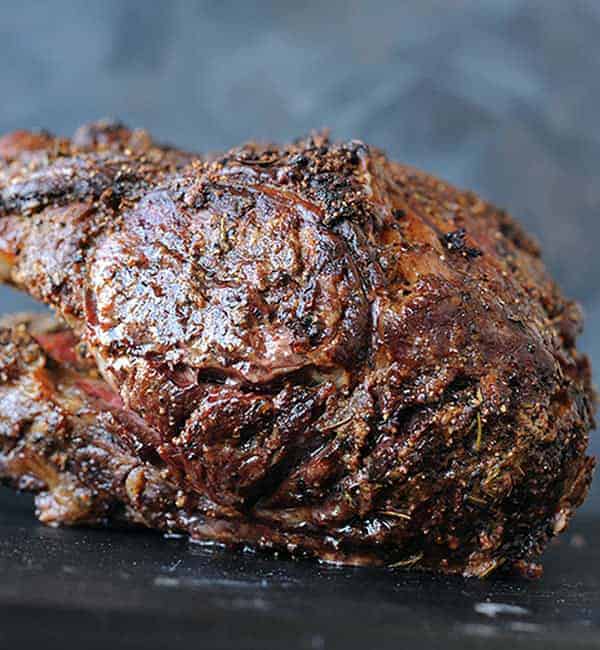
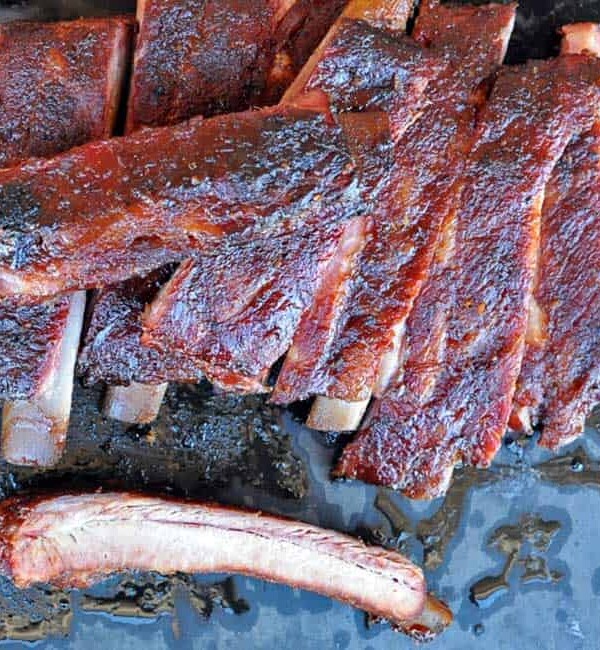









Are you sure it shouldn’t be 1/4 cup of rub for the meat and 1 tbsp for the mop?
It’s definitely 1/4 cup for the mop. You could go with more than 1 tbsp on the brisket, if you’d like.
Do you let the brisket rest in the liquid in the pan it was cooked in when finished or remove so its not sitting in the liquid?
Yes. I do leave it in the pan.
Thanks for sharing this Christie. It was nice to meet you and the family in West Memhis yesterday. Congratulations again on your recent competition.
Confused about #5 – 2 aluminum half pans? 1 Full size pan with foil over the top wouldn’t work?
Or are you cutting the brisket and placing in 2 pans?
Yes. I separate the flat and the point.
Can I use this technique without cutting so much meat off when I am not interested in competition or fitting the finished produce in a box for judges? Will it still cook fast?
Absolutely! It will likely take a bit longer since the pieces will be larger, but the process still works great.
Can I gauge when to crutch it based on the stall, instead of time? If it’s clearly stalled around 165-180, toss it in the wrap at that point? I noticed that your take off temp is a bit higher than I’ve seen elsewhere. I’ve mostly seen 203-205. In your experience, has 210 worked out better?
Yes. You can base it off of that. I actually usually base it off of color. If I like the look of the bark, then I wrap it. Temp is usually around 165-175. As for final temp, it depends on your altitude and grade of beef. When I cook hot and fast, I’m usually cooking Wagyu brisket. It’s heavily marbled, so going to 210 is best to render all the fat. If you’re cooking a choice grade, you can go lower. Mainly, look for the probe to glide in smoothly.
From your pictures it seems like you get less bark development from this method. Do you find that to be the case or are the pictures just misleading? I prefer a lot of bark but I also prefer sleeping so if a shorter cook is possible with the same
bark I’d be all over it!
With hot and fast, you do end up losing some bark because the brisket braises in the liquid. If bark is really important to you, you can start at a hotter temperature to really build up the crust. You can also do the foil boat method and not completely seal the brisket in the mop. However, that method will add more time to the cook.
Do you sauce your brisket for competition?
If you do, At what stage of the process?
I add a little bit of sauce at the end. I mix sauce with the jus and brush them after they’re sliced.